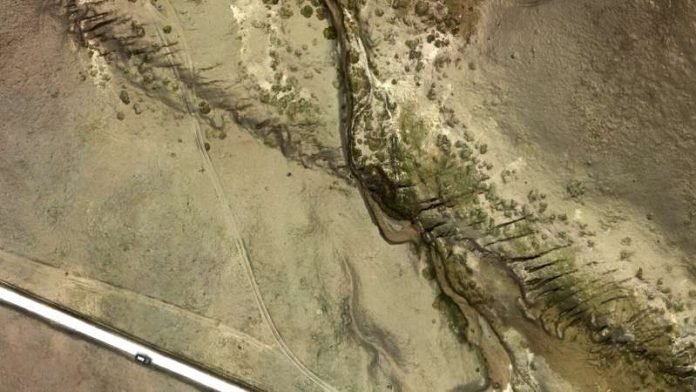
In the tranquil early hours of May 22, 2021, the serenity of China’s remote Maduo County, nestled on the Tibetan Plateau, was shattered by a powerful magnitude 7.4 earthquake.
This significant seismic event marked the latest in a series of nine major earthquakes that have struck the region since 1997.
The quake was noteworthy not only for its strength but also for the extensive surface rupture it caused, which was twice the global average length for quakes of similar magnitude.
It originated in the eastern part of the Jiangcuo fault system, a slowly slipping, left-lateral fault that had not been mapped prior to the earthquake.
This event has provided geologists with a unique opportunity to delve into the interplay between fault structures and earthquake dynamics, with the potential to refine our understanding of seismic hazards.
Jing Liu-Zeng and colleagues, in their study published in AGU Advances, offer an in-depth analysis of the Maduo earthquake, leveraging a blend of field observations and advanced imaging techniques.
The researchers utilized satellite imagery captured before and after the quake, alongside centimeter-resolution photographs from unmanned aerial vehicles, to investigate the fault system.
This approach allowed them to examine fractures in the Earth’s surface that are usually out of reach due to the area’s high altitude and extreme environment.
Their analysis focused on variations in the Earth’s surface across different fault segments that participated in the quake, taking into account their orientations and degrees of development, or maturity. Interestingly, fault maturity refers not to the age of a fault but to how evolved and complex it has become over time.
Previous studies have underscored the significance of fault maturity in shaping earthquake behavior.
However, the Maduo earthquake study presents a new perspective, suggesting that the orientation of fault segments relative to regional seismic stress patterns has a more substantial impact on the magnitude and specific characteristics of surface deformation than the maturity of the faults themselves.
These findings propose a shift in how seismic hazards are assessed, emphasizing the need to consider fault segment orientation in the broader context of regional stress fields. Such insights could greatly enhance the accuracy of seismic risk evaluations, not only for the Tibetan Plateau but for fault systems worldwide.
This research underscores the complexity of Earth’s geological processes and the importance of continuous exploration and analysis in mitigating the impact of future seismic events.
By deepening our understanding of the factors that contribute to earthquake dynamics, scientists are paving the way for more informed and effective hazard preparedness strategies.
The research findings can be found in AGU Advances.
Copyright © 2024 Knowridge Science Report. All rights reserved.



